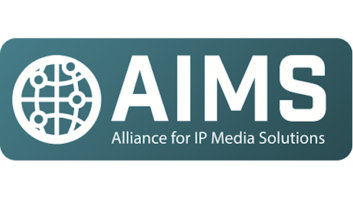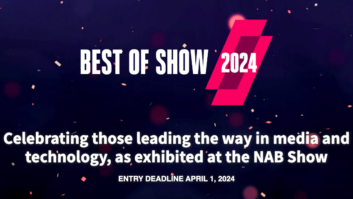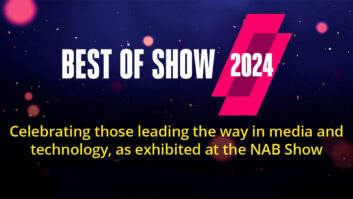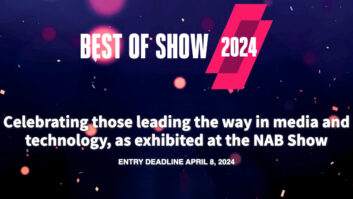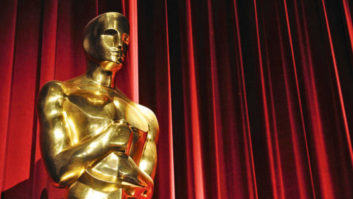Indianapolis, IN—After graduating with a bachelor’s degree from Indiana University, Chris Wodock decided the 9-to-5 life was not for him, so he headed to Boston to study music production and engineering at Berklee College of Music. After six years as a touring musician based out of Austin, TX, Wodock returned to his hometown of Indianapolis in mid-2002 and put his economics degree to work, initially building the Music Garage recording and rehearsal studio and, more recently, 416 Wabash, a music production facility and event space.
“When we opened in 2004, rehearsals were booming,” says Wodock, who launched Music Garage with the goal of building out multiple rehearsal rooms in addition to a recording studio. “There were rehearsal spaces and studios all over Austin, so I thought I’d model off what I’d seen there. But they’re completely different music scenes, so we only got to build three rehearsal rooms.”
Over the following 12 years, he says, it became increasingly difficult to entice bands into the rehearsal rooms. The studio, on the other hand, was doing fine. “I worked with Gucci Mane back in 2007; that generated all kinds of buzz and I got labeled as the place to go for hip-hop.”
When the lease came due for renewal, Wodock decided it was time for a change. “I found a couple of investors who were into my idea of creating a recording studio that was more of an events/performance space. Why don’t we have bands come into the studio and record, and then do a show to promote their EP? I found this space; it had been empty for four years, so they were eager to rent it to us.”

416 Wabash’s 7,800-square-foot flexible space, with a standing capacity just short of 600 people, features an industrial vibe with multiple mezzanine levels and VIP areas that can be configured for anything from a wedding celebration to a corporate product launch to a music concert. “I bought a portable stage of 4-foot by 8-foot pieces, so we can tailor the stage for a solo acoustic artist or we can do a 24-foot by 16-foot stage for a larger touring act,” says Wodock.
Jordan Brooke Hamlin Builds Her Dream Studio in the Woods, by Steve Harvey, June 25, 2018
Shortly before relocating, Wodock purchased a 24-input SSL XL-Desk, which is outfitted with a variety of 500 Series modules, including pairs of Lindell Audio PEX-500 passive EQs and Heritage Audio ’73JR mic preamps, plus an SSL G Series stereo bus compressor. For the new facility, he purchased Lynx Aurora 24 HD converters for his Pro Tools HD12 rig and a pair of Focal Twin6 Be monitors. A double-wide outboard rack houses API, Focusrite, Universal Audio and other devices. “Premium converters, good speakers, nice desk; that was our goal,” he says.
Wodock built his previous studio from Wes Lachot designs posted on the internet. Lachot was his first choice for the new facility, but the budget wouldn’t quite stretch far enough. Instead, he went with Indianapolis-based Haverstick Designs, a company founded by Gavin Haverstick, who previously worked for local acoustics company Auralex.
“When I saw he’d branched out on his own, I thought, of course I’m going to call the hometown guy,” says Wodock. “I sat down with Gavin and said I wanted it modeled around an SSL desk and Focal speakers, and he built exactly what I asked for.”

Wodock and his crew constructed the production facilities to Haverstick’s specifications, only using Primacoustic diffusors on the back wall for the sake of expediency. “It was way harder than I thought,” he says. “Putting real lead stone into the recording booth was a two-day process that turned into two weeks. There were points where I’d been working for 14 hours and was ready to give up. Nobody tells you how difficult it is to hang a 5×3 piece of 1-inch glass and how incredibly heavy it is. But we pushed through it.”
Sacrificing a Ferrari for Halo Studio’s Sound, by Steve Harvey, Jan. 12, 2018
Wodock chose to keep the control room to a workable size while also including an iso booth that could accommodate several musicians. “It was a fine line between making the event space as usable as possible and having enough space to make the studio as usable as possible,” he says.
Additionally, the event space is available for recording larger bands, or live performances, he notes. “We put a 24-input panel with four data lines outside the control room facing the event space. I had Jared Stansill at Pro Audio LA do all my Mogami wiring.”
A freestanding, isolated mezzanine structure above the control room serves as a VIP area. “We might make it a green room,” says Wodock, who is keen to keep the entire space as flexible as possible and cater to the widest possible range of events. “I don’t want to be pigeonholed; I try to do it all.”
Want more stories like this? Subscribe to our newsletter and get it delivered right to your inbox.
But music is certainly a focus. “This weekend we have a four-band bill on Friday, a three-band bill on Saturday, then Sunday is a Latin dance night,” he reports. One of Wodock’s goals is to produce a music show similar to Austin City Limits. “We did a test pilot in April with a film company, with seven cameras and two really good regional touring acts.”
The studio control room is linked over Cat 5 via a Focusrite RedNet 3 box to a Midas M32 console in the event space. “I can have a front-of-house engineer and a studio engineer each doing their own things,” he says.
For a P.A. system, Wodock turned to his local dealer. “I usually get my equipment through Sweetwater because they’re two hours north of us. My Sweetwater sales rep, Jeff Barnett, recommended a PreSonus ULT system, two mains and two 2,000W subs. It’s plenty loud—it’s 110 dB all day—and crystal clear. We’ve had great luck with it.”

Indeed, with few other businesses combining a music studio with an all-purpose event space to serve as a template, Wodock believes luck has played a part in 416 Wabash’s success. “I’d had a studio business for almost 18 years, so I had a pretty good clientele, and it was a good time to add the event space. Now I’m adding even more clientele who are interested in not only recording but also having their EP release here,” he says.
“But I definitely don’t think I’m that smart. I think I just got lucky.”
416 Wabash • www.416wabash.com
